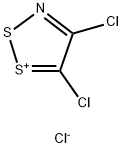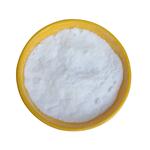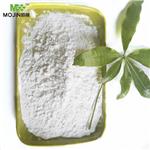Uses
2-Cyano-6-methoxybenzothiazole is a key intermediate in the synthesis of fireflys’ luciferol, the light emitting chemical. Also a reactant in the preparation of 1,2,4-Oxadiazole EthR inhibitors used in the effort to improve the sensitivity of the human pathogen mycobacterium tuberculosis.
Chemical Properties
off-white to light yellow crystalline powder
Uses
2-Cyano-6-methoxybenzothiazole has been used in the synthesis of:
- firefly luciferin via condensation with cysteine
- luciferin β-glycosides, substrates for novel ultrasensitive enzyme assays
Uses
Luciferin intermediate.
Synthesis
Typical routes to 2-cyano-6-methoxybenzothiazole include the classical Rosenmund-von Braun and Sandmeyer reactions. These methods proceed with low atom economy and require toxic reagents such as KCN, NaCN, Zn(CN)2, or TMSCN, which are also challenging to handle in a large-scale synthesis. Shahmoradi et al. introduced a Cu-catalyzed cyanation of 2-iodo-6-methoxybenzothiazole to synthesize 2-cyano-6-methoxybenzothiazole. K4[Fe(CN)6] was applied as a source of cyanide, and CuI in the presence of N, N N′, N′-tetramethylethylenediamine (TMEDA) was used as part of the catalyst system. 2-Amino-6-methoxybenzothiazole as a starting material was synthesized from p-anisidine as shown below and subsequently converted into 2-iodo-6-methoxybenzothiazole using a simple and efficient one-pot sequential diazotization-iodination method. The one-pot cyanation of 2-iodo-6-methoxybenzothiazole to 2-cyano-6-methoxybenzothiazole was achieved using 0.25 mmol of K4[Fe(CN)6], 0.25 mmol of CuI and 3 mmol of TMEDA in acetonitrile at 160°C. In addition, 1 mmol of mystril trimethyl bromide (MTMAB) was used as a phase transfer agent. The presence of a phase-transfer catalyst is essential for a successful cyanation reaction. Under these conditions, 2-cyano-6-methoxybenzothiazole was produced in a 90% yield[1].
References
[1] Ghasem Shahmoradi, S. Amani. “Synthesis, characterization and computational studies of 2-cyano-6-methoxybenzothiazole as a firefly-luciferin precursor.” Heterocyclic Communications 24 1 (2018): 255–258.






